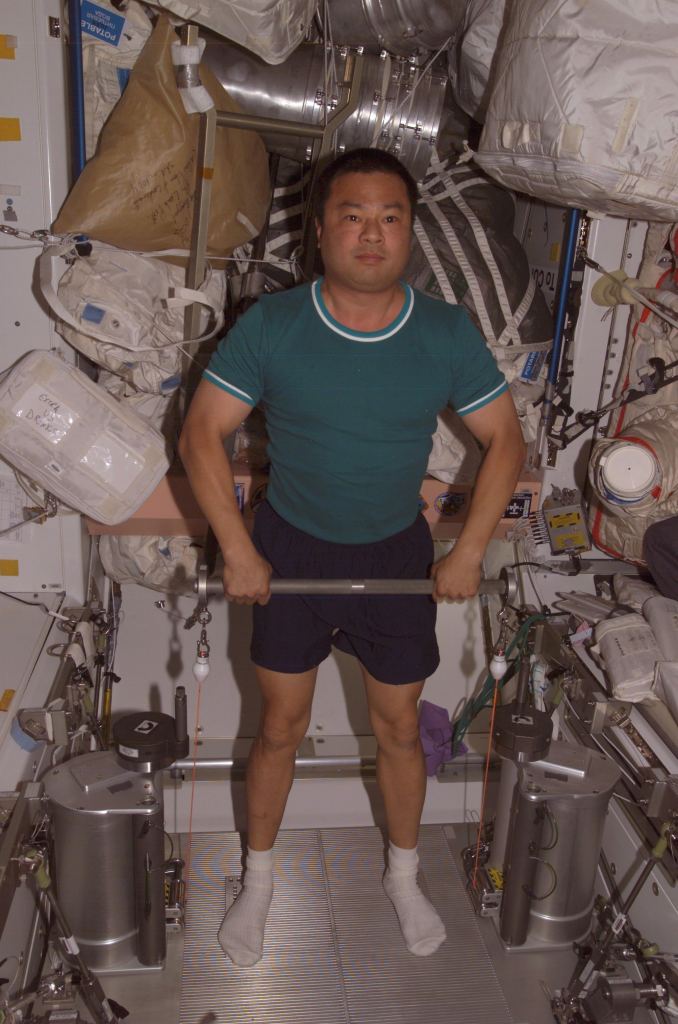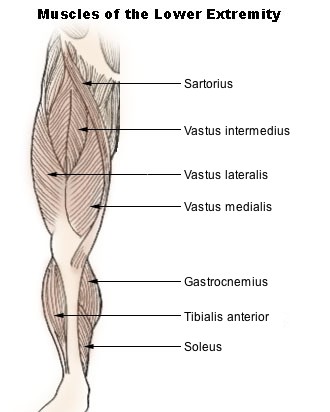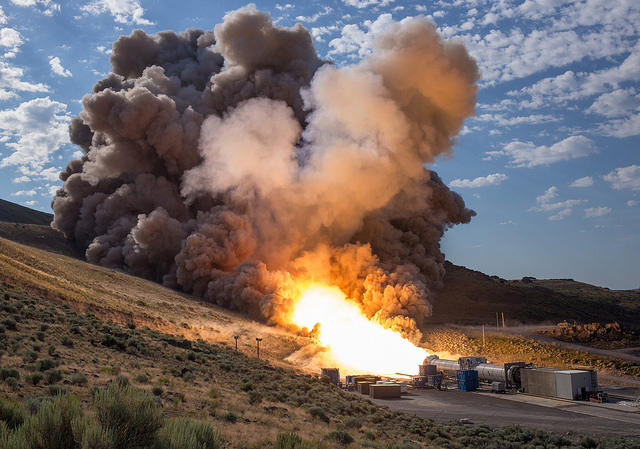One of the obstacles to long space missions is the muscle loss that astronauts suffer from. It’s called atrophy, and NASA says that astronauts can lose up to 20% muscle mass during missions of only 5 to 11 days. This muscle loss affects what are called “anti-gravity muscles,” including calf muscles, the quadriceps and the muscles of the back and neck.
This muscle loss makes it hard for astronauts to complete their tasks, especially when missions to Mars happen. It can also be very dangerous to astronauts, because they’re weakened when they return to Earth. If there are problems during re-entry, and they need to perform any strenuous emergency procedures, that missing muscle could be the difference between life and death.
Muscle loss stems from working in a micro-gravity environment. In that environment, an astronaut’s anti-gravity muscles aren’t active during normal activity. Astronauts exercise up to 2.5 hours a day on the International Space Station to combat muscle atrophy, by riding a stationary bicycle, walking or jogging on a treadmill, and by using a RED (Resistance Exercise Device.)

NASA recently funded a 70 day study into muscle loss, to investigate how muscle loss could be minimized for astronauts. The study is published in PLOS One, with a title too long to reproduce here. Rather than using actual astronauts as test subjects, which would be impossible to do, the study used subjects who underwent 70 days of HDBR (Head Down Bed Rest.) HDBR is considered a good proxy for what astronauts undergo in micro-gravity environments.
The study was done by the University of Texas Medical Branch (UTMB) by a large group of researchers. All of the test subjects were male volunteers aged 35, plus or minus 8 years. There was a control group who stayed in HDBR for 70 days without exercise or supplements, another group who received placebo and exercise, and another group who received testosterone injections and exercise. A total of 24 test subjects took part.
During the study, researchers took biopsies of a muscle called the Vastus lateralis. It’s the largest part of the quadricep muscle in the thigh. These tissue samples were analyzed for proteins.

What Did They Find?
The researchers discovered several changes to muscle proteins in the Vastus lateralis that were reversed, or at least blunted, by exercise. Those exercises resulted in a healthier protein organization within the muscle fibers. The testosterone treatment drove further protein changes that promoted muscle growth exceeding that of exercise alone.
That probably doesn’t sound too surprising, since most of us know what testosterone does. But there’s more to the study. The team identified bio-markers in their test subjects that are potentially predictive of muscle loss. There also predictive biomarkers that indicate a robust response to exercise and treatment to counteract muscle loss.
“…the development of accurate predictive models will likely involve algorithms that include panels of several proteins and factors.”
From the Study “Proteomic investigation of human skeletal muscle before and after 70 days of head down bed rest with or without exercise and testosterone countermeasures”
As they say in their study, “Discovery of sensitive proteomic biomarkers may in the future allow for personalized medicine approaches by aiding in the development of more directed countermeasures based upon baseline proteome profiles.” So the better they know the astronaut, the better they can predict and prevent muscle loss.
“The unique insights we’ve gained on muscle proteins during extended bed rest could someday be applied to predict changes to muscle mass/strength in various situations and then develop a personalized program of exercises and hormonal countermeasures,” said senior author E. Lichar Dillon, UTMB assistant professor in the department of internal medicine.
“The study has given us the ability to identify biomarkers that predict how susceptible each individual is to muscle function decline and how effectively different exercise and hormone treatments can combat the atrophy,” said senior author Randall Urban, UTMB chief research officer and professor in the department of internal medicine.

As the authors of the study acknowledge, this is a fairly simple approach to the problem, but an important first step. Though they’ve identified some proteins that serve as biomarkers for muscle atrophy and treatment, there are likely a large number of proteins working together.
“As expected, no individual protein we identified was fully predictive for every subject or physiological function measured, and the development of accurate predictive models will likely involve algorithms that include panels of several proteins and factors,” the study says.
Onward To Mars
We’re going to go to Mars, no doubt. A lot of the headlines around that effort focus on the technology to get the job done. Powerful rockets like the Space Launch System, and spacecraft like the Orion, are being developed to get astronauts to Mars and then home again.

But the astronauts themselves are the ones that have to do the work. NASA is dedicating a lot of resources to understand how they can endure those long missions. This study, and more to follow, will be a key part of successful Mars missions.
More:
- Press Release: UTMB researchers learned how to better combat muscle loss during space flights
- Research Paper: Proteomic investigation of human skeletal muscle before and after 70 days of head down bed rest with or without exercise and testosterone countermeasures
- NASA: Muscle Atrophy Factsheet
- NASA: Your Body In Space: Use It Or Lose It
- Canadian Space Agency: What Happens to Muscles In Space?
- Sidney Morning Herald: Astronaut Scott Kelly on the devastating effects of a year in space
- Universe Today: How Strong is the Gravity on Mars?

